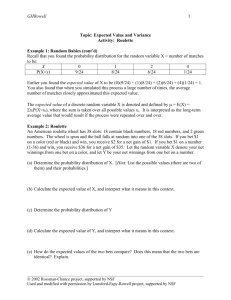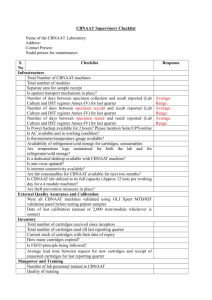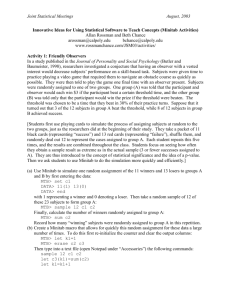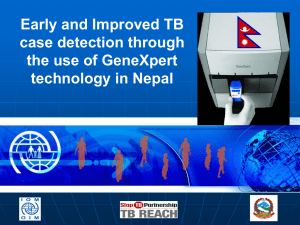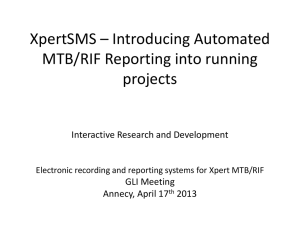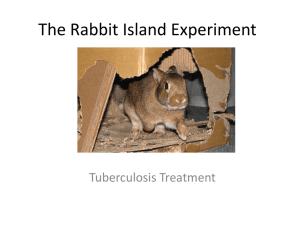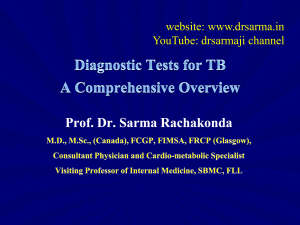Part1
advertisement
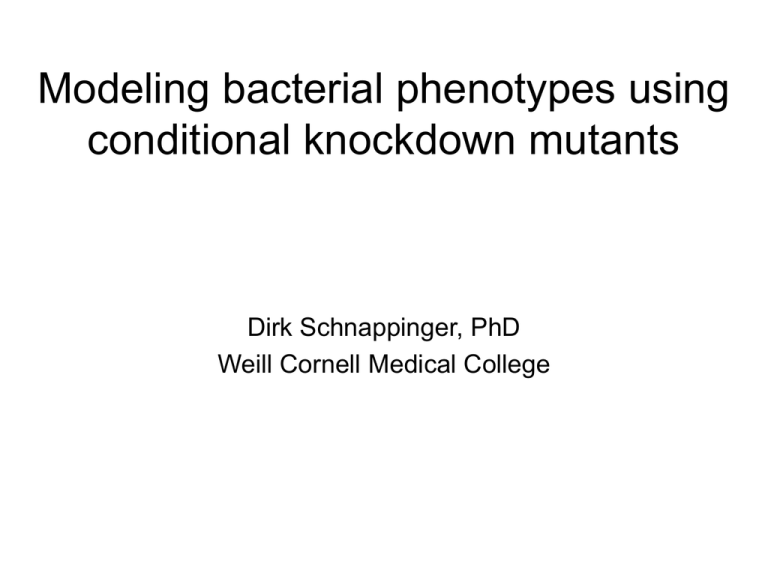
Modeling bacterial phenotypes using conditional knockdown mutants Dirk Schnappinger, PhD Weill Cornell Medical College Target-based antibacterial drug discovery has been difficult Payne et al (2007) Drugs for bad bugs: confronting challenges of antibacterial discovery. Nature Reviews Drug Discovery 6, 29. Target-based antibacterial drug discovery – some reasons for failure • Selection of an inappropriate target → Develop and apply a genetic approach to identify Mtb genes required for growth and survival during all phases of an infection. → Measure vulnerability of Mtb to partial inactivation specific enzymes. • Biochemical screens against purified enzymes do not select for compounds that are able to enter the bacterial cell → Engineer Mtb strains that are hypersusceptible to inhibition of a specific enzyme or pathway. Evaluating Mtb proteins / pathways as new targets for drug development: biotin metabolism • Biotin is required to synthesize several essential components of the mycobacterial cell envelope. • Transposon mutants are strongly attenuated in mice (Sassetti and Rubin). The biotin biosynthesis pathway • Amiclenomycin prevents mycobacterial growth through inhibition of BioA. • Crystal structure of BioA has been solved (Sacchettini). Mtb DbioA Mtb DbioA Mtb DbioA Mtb DbioA Biotin concentration in human serum: 0.1 to 3.3 nM (Hansen & Holm, Clin. Chem. 35/8, 1989) 0.01 to 0.2 nM (Hayakawa & Oizumi J Chrom 1987) Mtb DbioA Mtb bioA TetON Impact of silencing bioA during infections Impact of silencing bioA during infections Plus doxy Day 56 Dav 112 Day 168 Day 224 Doxy day 1 to 10 Doxy day 1 to 56 Conclusions relevant to the evaluation of BioA (biotin metabolism) as a drug target Small molecules that efficiently and specifically inhibit BioA are predicted: • to be inactive in the presence of >25 nM biotin, • to be bactericidal in the absence of biotin, • to be effective during acute and chronic infections (given sufficient bioavailability), • to require months to eliminate Mtb during an infection. Correlation between chemistry and genetics will of course not be perfect. How efficient do BioA inhibitors have to be? Mtb bioA TetON-1 grows without inducer in mice. Engineer Mtb strains that are hypersusceptible to inhibition of a specific enzyme or pathway Engineer Mtb strains that are hypersusceptible to inhibition of a specific enzyme or pathway M. tuberculosis bioA TetON-1 Summary BioA is required for (i) growth and survival of Mtb in biotin-free liquid medium, and (ii) growth and persistence of Mtb in mice. BioA is a low vulnerability target but an otherwise “druggable” target and partial knockdown mutants might facilitate the development of BioA inhibitors with whole cell activity. Developed system with improved gene silencing activity and faster kinetics of inactivation. Thanks to Weill Cornell University of Minnesota NIH/NIAID Harvard University Ehrt, Sabine Aldrich, Courtney Barry, Clifton Rubin, Eric Ferraras, Julian Finzel, Barry Boshoff, Helena Wei, Jun-Rong Klotzsche, Marcus Duckworth, Benjamin Monteleone, Mercedes Shi, Ce University of Pittsburgh Stanford Odaira, Toshiko Wilson, Daniel Flynn, JoAnne Dolganov, Gregory Lin, Philana Schoolnik, Gary Imperial College Yonsei/Masan, Korea Robertson, Brian Cho, Ray Williams, Kerstin Taek-Sun Song Park, Sae Woong Novartis, Singapore Camacho, Luis Dartois, Veronique Dick, Thomas Manjunatha, Ujjini Pethe, Kevin Rao, Srini Robert Wilkinson Young, Douglas SBRI Rustad, Tige Sherman, David

